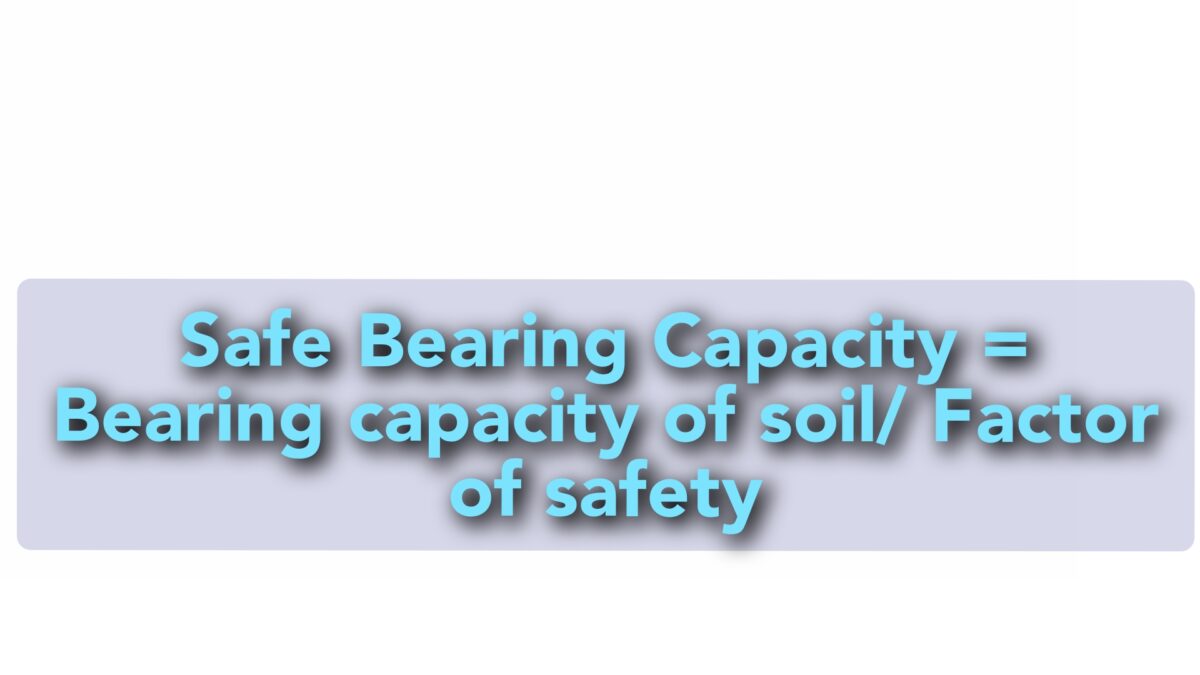The safe bearing capacity of soil is the ability of soil to safely bear the load of the structure. SBC test is the first test to be carried out prior to any type of construction. Safe bearing capacity should be tested at various ground locations to exactly identify the correct value.
Table of Contents
What Is the Safe Bearing Capacity (SBC) of Soil
In simple words, SBC is soil’s ability to support loads safely. A field test is done on the construction site to verify the soil’s ability to support loads.

Let us take a practical example to better know the concept of SBC.
The little plastic chair for a child can bear a load of 10 kg. If an adult sat down on the same chair, the chair will be broken.
A similar case is applied to the soil. Assuming more load is applied to the soil than its resistance, the soil starts to shift or break, which leads to settlements.
In order to keep the structure safe, the safe bearing capacity is determined on the field at different points, and the foot selection is made accordingly.
The maximum load per unit area that the soil can support without any displacement or settlement is known as Safe bearing capacity.
Safe Bearing Capacity = Bearing capacity of soil/ Factor of safety
The factor of safety is taken to design the structure safely without any collapse due to soil bearing capacity. It means the structure is designed for low bearing capacity or it is assumed to be bearing capacity of soil is low compared to the original bearing capacity of the soil.
If the original soil bearing capacity is 8 tons/m2 and the factor of safety is 2, the structure will be designed for 4 tons/m2 and this will be a safe bearing capacity o the soil.
Safe Bearing Capacity Values Of Different Types Of Soils
| S.No | Type of Soil | Safe Bearing Capacity ( kN/m2) |
|---|---|---|
Cohesive Soils | ||
| 1. | Soft shale, hard or stiff clay in a deep bed, dry state | 440 |
| 2. | Medium clay readily indented with a thumbnail | 245 |
| 3. | Moist clay and Sand clay mixture which can be indented by thumb pressure | 150 |
| 4. | Black cotton soil/expansive clay ( 50% saturated) in a dry state | 130 to 160 |
| 5. | Soft clay indented with moderate thumb pressure | 100 |
| 6. | Very soft clay which can be penetrated with the thump up to a few centimeters | 50 |
| Cohesionless Soil | ||
| 7. | Compact gravel/sand and gravel mixture with good resistance against penetration of tools | 440 |
| 8. | Compact and dry coarse sand | 440 |
| 9. | Compact and dry medium sand | 245 |
| 10. | Loose gravel or sandy gravel mixture, dry state | 245 |
| 11. | Fine sand and silt ( consists of dry lumps) | 150 |
| 12. | Loose and dry fine sand | 100 |
| Rocks | ||
| 13. | Hard rocks such as granite trap, diorite, etc. | 3240 |
| 14. | Laminated rocks such as sandstone, limestone, etc. | 1620 |
| 15. | Residual deposits of shattered and broken bedrock and hard shale cemented material | 880 |
| 16. | Soft rocks | 440 |
Faqs
There are three types of safe bearing capacity: ultimate, net safe, and gross safe. They tell us how much weight the soil can hold before it gets too heavy.
The amount of water in the soil is important. If the soil is too dry or too wet, it can’t support as much weight. So, we need to make sure the soil is just right.
Yes, the ground can be different in different places. Some areas may be stronger and can hold more weight, while others may be weaker. We have to check the soil in many places to be safe.
The shape of the base where we build something matters. If it’s wider, it can hold more weight because it spreads out the load. We can also make the base uneven if the ground is not the same everywhere.
Yes, we always make things extra safe. We use safety factors to consider things like how the soil might change or if we made any mistakes. This way, we make sure everything is strong enough.
